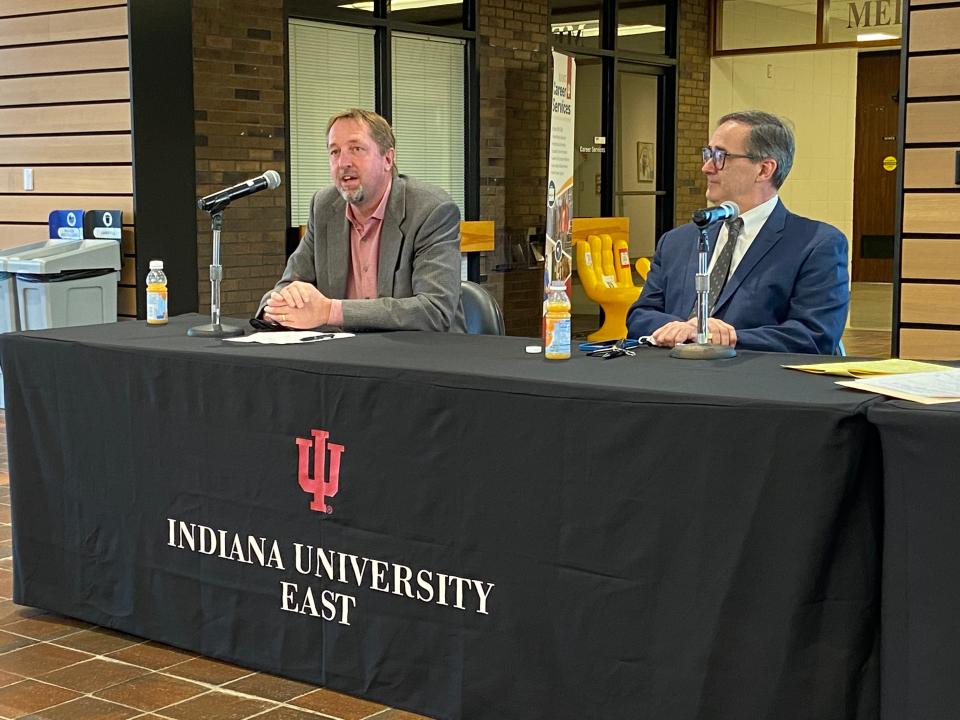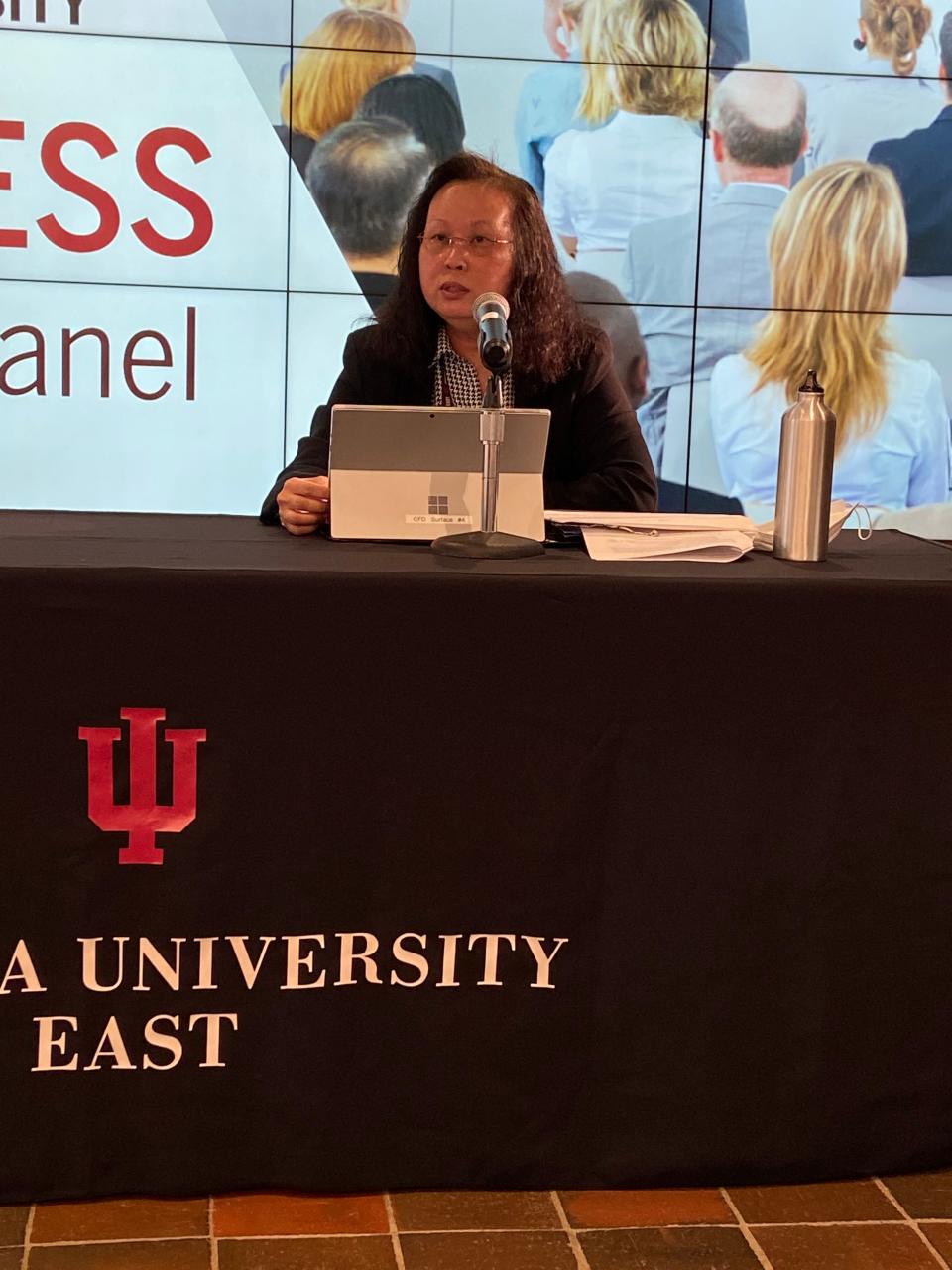Area businesses express optimism for 2022, but inflation threatens local economy
RICHMOND, Ind. — Many East Central Indiana businesses optimistically view their 2022 futures.
More than half of the 146 businesses who responded to Indiana University East's East-Central Indiana Business Survey expressed optimism about the business and economic condition in 2022, while only one-fifth were pessimistic. More than 80% also expected to increase or maintain their level of production or business activity during the new year.
Oi Lin Cheung, associate professor of finance and director of the Business and Economic Research Center at IU East, presented the survey findings Wednesday during Indiana University's annual Business Outlook Panel presentation at IU East.
Richmond: $815K in Community Crossings funds to help city with 35 road-repair projects
“Having enduring the COVID-19 pandemic for over a year now, businesses have gradually adapted to the new normal and have built in their practices various measures to cope with the disruptions arising from the COVID virus,” she said.
The survey includes businesses in Fayette, Franklin, Henry, Randolph, Rush, Union and Wayne counties. The detailed forecast will be available at www.ibrc.indiana.edu/ibr/.
IU East's Regional Business Confidence Index rose 2.5% compared to 2020, with its Present Situation Index rising 6.4% and its Expectation Index growing 1.0%.

About half of survey respondents hope for higher profitability during 2022 and another one-third expect they will maintain their 2021 profit levels. Unemployment for the region is expected to remain around 4% through 2022 after Wayne County (4.4%) and the region (4.2%) monthly averages returned to pre-pandemic levels.
STAY INFORMED AND SUPPORT LOCAL JOURNALISM: Subscribe today using the link at the top of this page.
For 2021, about 60% of participating businesses increased their productivity or business activity, and less than one-fifth suffered a decline. Similarly, about 60% maintained their employment level, while one-fifth compressed their employment level. Although more than 80% found their cost of business grew during 2021, about 40% increased profitability, while about 25% saw a profitability decline.
Also in Wayne County, 1,135 private-sector jobs were lost during 2021's first quarter, and the overall average weekly wage grew just 0.8% compared to the same period of 2020. The county had the region's highest growth in home sales at 13.4%; however, the $115,000 median price was the region's lowest percentage increase at 4.5%.
Business Outlook panel
Wednesday's event included a panel of Indiana University economists discussing their forecasts for the state. They predicted strong economic growth early in the first half of 2022 driven by high household savings. They warned, however, about inflation becoming an important 2022 story.
The key to inflation is whether it is transitory, which means it will recede, or if it is long-term and requires Federal Reserve action that dampens economic growth.
“Overall, I really see a fairly positive economy right now,” said Kyle Anderson, a clinical assistant professor of business economics at the Kelley School of Business in Indianapolis.
He said positives include fairly strong gross domestic product growth, although it has recently been weakened by the Delta variant of COVID-19 and supply chain challenges. The supply chain challenges and labor shortage are downsides to household savings that are 50% higher than two years ago.

The household savings would indicate economic growth because 70% of the economy is based on consumer spending, Anderson said, but that could be offset by higher prices resulting from the supply chain and labor issues.
COVID: Reid Health begins Pfizer vaccinations for children ages 5-11
Federal money distributed during COVID-19 has increased household savings and hampered hiring. The hope is that the extra savings will dwindle and restore the workforce. Ryan Brewer, associate professor of finance at Indiana University Purdue University Columbus, said federal stimulus was necessary during a stopped economy; however, it occurred too late, arriving after the economy was heating back up so it actually exacerbated inflation.
“I think the economy right now is like a badly microwaved dinner," Brewer said. "What I mean by that is, I think that some of the stuff is way too hot, some of the stuff is way too cold, and then it’s so bad that it overshadows whatever was good that you won’t even notice what’s good.”
He said a Wayne County and state reliance on manufacturing creates more amplified reactions to recessions and recoveries. Brewer said if interest rates are raised too quickly and the economy cools off, the manufacturing areas will be hurt unless wage increases match price increases.
However, he said the state should have 2.2% growth, unemployment should drop and, if COVID is controlled during 2022, the state's economy should grow in a more normal fashion.
Russell Rhoads, an associate clinical professor of financial management for the Kelley School of Business, said there are three things he's watching in the financial markets: inflation, interest rates and high stock valuations. All three, he said, are already concerning to the market.
Speaking about inflation, Rhoads said he recently traveled in the southern United States and on more than one occasion ate at restaurants that were using sticky notes on menus for price increases, showing how quickly prices are increasing. Wage increases must match price increases, he said, or there will be negative impacts on families and communities.
In response to a question about rising gasoline prices motivating electric vehicle sales, Rhoads said he also had recently traveled to London, England. There, some gas stations were closed and gas cost the equivalent of $8 per gallon.
Crime: Appeals court affirms sentence for failure to register as sex offender
He said an Uber driver told him the government makes no secret it's allowing gas prices to rise to drive the shift to electric vehicles. He believes the U.S. government is also fine with rising gas prices as a tool to motivate electric vehicle sales.
Anderson said that as an academic economist he would charge a $2 tax per gallon of gasoline to reduce dependence on fossil fuel; however, he also noted that he has no plans to run for office. Brewer said the problem with high gas prices is they unfairly penalize many lower-paid workers who must drive to work, as opposed to administrative-type workers who can work from home and utilize videoconferencing.
This article originally appeared on Richmond Palladium-Item: East Central Indiana businesses hopeful for 2022, US inflation lingers

